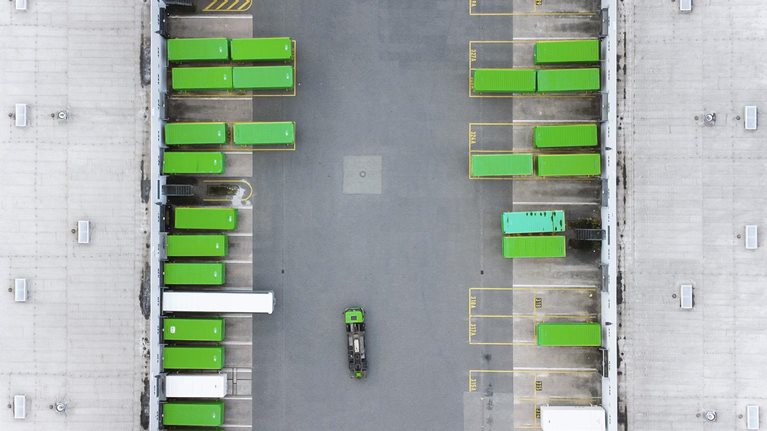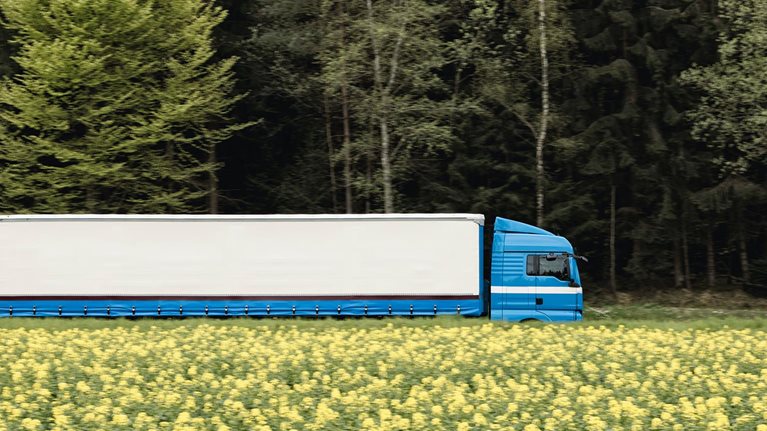Companies are ramping up their climate commitments, and with them their ambitions to source materials—such as green steel, recycled aluminum, and recycled plastic—that have lower emissions intensity than their conventional equivalents. Production capacity for many low-emissions materials, however, appears set to fall far short of future demand. For example, our analysis suggests that in 2030 demand for green steel in Europe could be twice as great as the available supply. Projections point to global shortages of recycled aluminum and recycled plastic.
Such market imbalances will squeeze makers of industrial goods and consumer products that have pledged to reduce their supply chain emissions. Companies that fail to secure adequate supplies of scarce green materials may need to pay steep premiums, or else they will fall short of their target commitments, potentially harming their relationships with customers, investors, and other stakeholders. Already, growing demand has pushed the prices of some types of recycled plastic much higher than the prices of virgin resins.
Anticipating these risks, careful players across value chains are now working to build the capabilities and strategies needed to avoid supply disruptions in the near term and beyond. In this article, we identify potential shortages and explain business practices that can help companies cope with them. Three near-term actions—developing baseline insights on emissions and pricing for inputs, defining a sourcing strategy to lower emissions over time, and implementing sourcing plans at speed—could prove valuable as businesses prepare for the green-materials supply crunch.
Shortages of low-emissions resources loom
Savvy companies know that investors, regulators, and other stakeholders increasingly expect them to decarbonize. They also see that rising customer demand for low-emissions offerings could allow them to widen their margins and capture large shares of growing markets. Achieving the necessary decarbonization level means cutting not just the greenhouse-gas emissions from their own operations (Scope 1 and Scope 2) but also the emissions from their value chains (Scope 3). Of the more than 2,100 companies that have joined the Science Based Targets initiative (SBTi), nearly half have made 1.5°C-aligned commitments covering Scope 3 emissions “where relevant.”1

Explore COP28 with McKinsey
Scope 3 emissions account for 80 to 90 percent of the emissions associated with many end products, and large shares of these emissions occur upstream in the supply chain as a result of energy use and industrial processes. In response, companies are demanding ever greater quantities of low-emissions inputs, from raw materials to highly engineered components. Our recent reviews of requests for quotations from automotive OEMs suggest that more and more are specifying renewable-electricity use, recycled-materials content, and even SBTi commitments. However, the output of green materials isn’t keeping up with the increase in demand—and the gap could widen as more companies switch to the low-emissions resources they will need to meet their climate goals.
For example, our analysis suggests that demand for green steel in Europe will rise to 45 million to 50 million metric tons per year by 2030, if it increases at the pace necessary to meet the European Union’s target of a 50 percent emissions reduction. Steelmakers have said that they will have more than a dozen green-steel factories up and running in Europe at the end of the decade, enough to provide about one-third of the continent’s flat-steel production capacity. Even so, there could be a supply shortfall of more than ten million tons in 2030.
Steel is only one low-emissions resource that is headed for supply shortages in Europe. Further analysis points to wide gaps between production and demand for recycled aluminum and recycled plastic, partly because there may be too little aluminum and plastic waste available to meet demand for recycled materials (Exhibit 1).

Supply shortfalls ought to ease as more production capacity comes online, though it is not clear how long this might take. Until then, companies that haven’t already locked in supplies of low-emissions resources could face rising price premiums. Their dilemma will be whether to pay those premiums—for the sake of meeting climate pledges and satisfying customer demand—or to break their promises.
Now is the time to optimize sourcing for sustainability
For companies, the drive to add Scope 3 targets began accelerating in mid-2020. Some leading businesses, including automakers and consumer goods manufacturers, subsequently made moves to secure supplies of green resources. The longer that others wait to devise their own strategies for procuring low-emissions resources, the more likely they will be to end up at a disadvantage.
It’s still early days in the race to obtain low-emission resources and too soon for first movers’ approaches to be proven successful over the long term. Nevertheless, their actions suggest that a high degree of ingenuity, along with extensive collaboration across value chains, may be required to overcome supply constraints and lock in lower costs. Our experience with these companies has highlighted what they are doing to manage the green-materials squeeze. Their initiatives are typically concentrated in three areas.
Developing market insights to manage uncertainties. Because supply, demand, and pricing will vary as market conditions change, leading companies have worked to model these factors over time. Their modeling tools often include supply cost curves, supply and demand scenarios, and pricing scenarios, along with projections for suppliers’ capacity buildouts, cost positions, and emissions intensity. They also need to be frequently updated to keep up with a dynamic market. Most companies will want to update their models at least every six to 12 months.
Taking a strategic, long-term approach to sourcing decisions. The unsettled outlook for pricing, supply, regulation, and technology, among other considerations, has prompted leading companies to devise long-term strategies for reducing carbon emissions in their supply chains. These strategies generally integrate three components:
- Decarbonize suppliers’ energy use by helping suppliers shift to renewable electricity and fuels (or by switching to suppliers that use these energy sources) and by helping suppliers improve energy efficiency. Companies can begin implementing this practice right away and realize benefits in the near term. In some regions, companies face heightened urgency because of rising demand and prices for renewable energy. During 2021, Europe saw a large increase in corporate agreements to purchase renewable electricity, along with higher prices for wind and solar power.
- Adjust the materials mix, which can involve not only switching to lower-emissions materials but also redesigning products to use different or less material than they do now. Developing so-called circular products—those that are designed so that their components and materials can be recovered easily for recycling or reuse—is one such way to lessen demand for material. Businesses can alter some products to incorporate low-emissions materials and components right away, but in other cases, they will likely need a substantial lead time of up to a couple of years to overhaul product designs and retool manufacturing processes.
- Partner with suppliers to expand production capacity for green materials or to implement low-emissions processes. In two examples of this approach, which we explore further below, automakers are helping finance the zero-carbon steel plants that will supply them with the green steel they need. The time and effort involved in building or reengineering production facilities means that companies that establish green-sourcing partnerships now can expect them to yield benefits starting in three to seven years.
Building new capabilities beyond supply chain management. As the practices above suggest, reducing supply chain emissions will be a yearslong effort for most companies, and one that requires a host of new management capabilities. Most companies will need to invest in analytical and strategy-setting capabilities just to institute these practices. Other capabilities may be needed as well, such as design skills to eliminate supply chain emissions by changing products’ material requirements, or engineering capabilities required to develop product-as-a-service business models.
To transform a business in these ways will take time, but companies cannot afford to delay action. The green-materials shortage has begun, and leading businesses are preparing for it. Below, we describe three near-term actions that companies can take to get ready.
Step 1: Develop baseline insights on emissions, supply, demand, and pricing for every material input
To plan for supply chain decarbonization, companies should first understand both the emissions generated during the manufacturing of all the components and materials they now procure and their exposures to supply, demand, and price volatility for these inputs.
Supply chain emissions and risk exposures can vary greatly among companies, as well as among the goods sourced by any given business. The typical automotive OEM, for example, procures a broad array of components and materials. Of these, a few ordinarily account for a large majority of supply chain emissions (Exhibit 2). This diversity allows OEMs to focus first on the most economical ways of abating upstream emissions. For example, if switching to recycled ABS,2 a type of plastic, turns out to be a more cost-effective way to eliminate emissions than switching to carbon-free copper, a company can seek out green materials accordingly, especially in the near term.

On the other hand, many automotive suppliers find that most of their supply chain emissions result from a single raw material. For some suppliers of mechanical components, steel accounts for more than 80 percent of their embedded emissions. Suppliers of plastic parts might find that more than 90 percent of their upstream emissions result from their purchases of plastic granulate. Companies such as these have fewer options for decarbonizing and face far more volatile costs.
Step 2: Chart a sourcing strategy to cut emissions over multiple time frames
We believe the shift to zero-emissions materials will play out over three time frames: the next 12 months, the two or three years after that, and the ensuing period out to ten years from now. In the nearest time frame, companies can achieve significant reductions of supply chain emissions—up to 40 percent for many materials—through such measures as using more secondary material and changing to suppliers that source renewable energy.
Over the next two horizons, continued decarbonization will depend on the pace of such developments as commercialization of new low-carbon materials, capital investment by suppliers, and innovation for hard-to-abate materials. Production of some low-carbon supplies, such as electric-vehicle (EV) batteries and chemically recycled plastics, is being scaled up. Other supplies, such as inert-anode aluminum, will take longer to reach the market. Companies should ascertain when they might be able to procure low-carbon materials that are not yet available in mass quantities and begin planning now for how they will secure their share.
A company may need new purchasing models for some supplies—especially if it lacks the buying power to compel suppliers to decarbonize. To encourage investment in R&D or production capacity, competitors in some industries may choose to form “buyer’s clubs” that agree to buy large quantities of low-carbon materials.
Step 3: Implement low-emissions sourcing plans at speed
Green-material sourcing has already begun to disrupt traditional buyer–supplier relationships, as CEOs at front-running companies negotiate new low-emissions procurement contracts among one another. To keep up, other companies will need to adjust their own procurement practices quickly. Leading players use their strategic goals for supply chain decarbonization to define targets that procurement teams can reflect in the requirements and specifications they send to suppliers. To reinforce this process, some companies are implementing “shadow” internal carbon prices.
Companies will also need to gauge the progress of their decarbonization efforts by tracking and tracing emissions throughout the supply chain. Few have mastered this new skill. Fewer still have mapped their supply chain emissions using primary data—in part because suppliers rarely collect this data themselves. Sourcing teams may need to help suppliers install hardware and software to generate the emissions data they want.
And while a good portion of supply chain emissions can be reduced with near-term action, C-suite leaders should also prepare to invest now in longer-term solutions. Some companies are financing innovation and production-capacity increases for the low-emissions materials they require. Mercedes-Benz and Scania, for example, have each acquired equity stakes in H2 Green Steel, a Swedish start-up that is constructing both a green-steel plant and a green-hydrogen plant that will produce the fuel needed for steelmaking. Similarly, BMW announced an investment in Boston Metal, a US-based green-steel start-up.
When companies establish targets for reducing Scope 3 emissions, they also accept the task of decarbonizing their supply chains. This task comes with practical challenges, but businesses that get it right stand to gain market share and improve their margins. By taking near-term action to develop insights on emissions and market dynamics, plan sourcing strategies, and create capabilities, they can achieve immediate emissions reductions and sustain progress toward longer-term goals.


